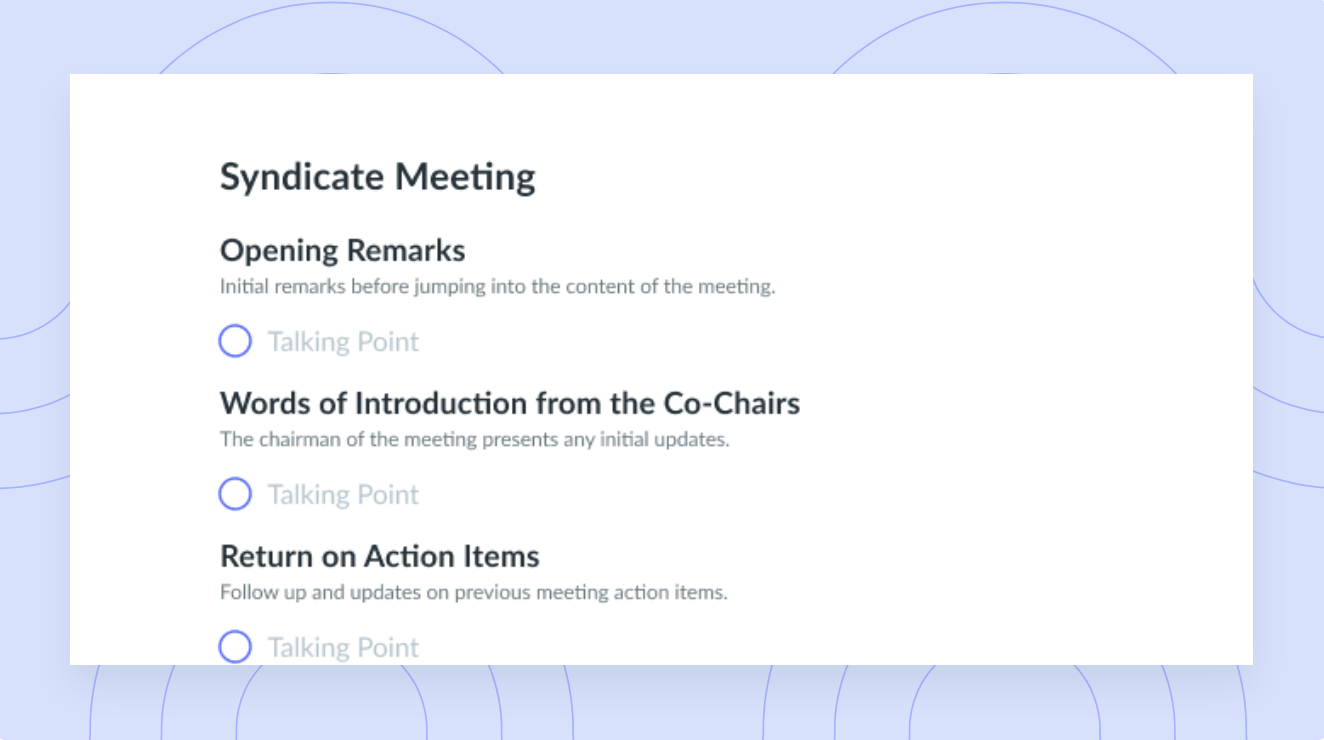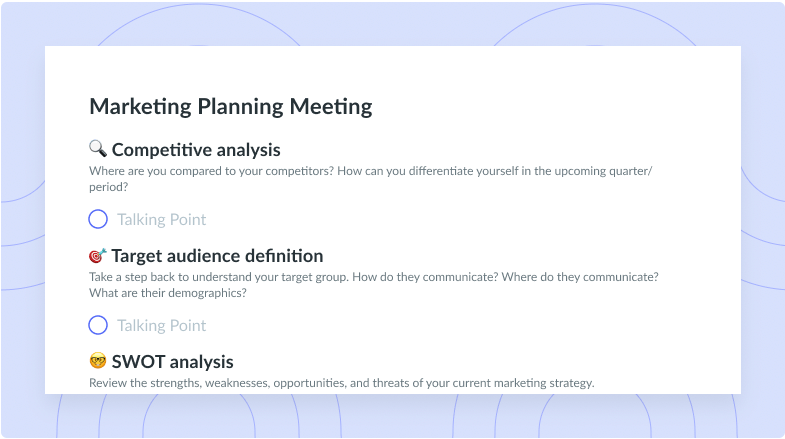
SWOT Analysis Meeting Template
Get this templateUse this template to examine your company's internal strengths and weaknesses as well as external opportunities and threats.
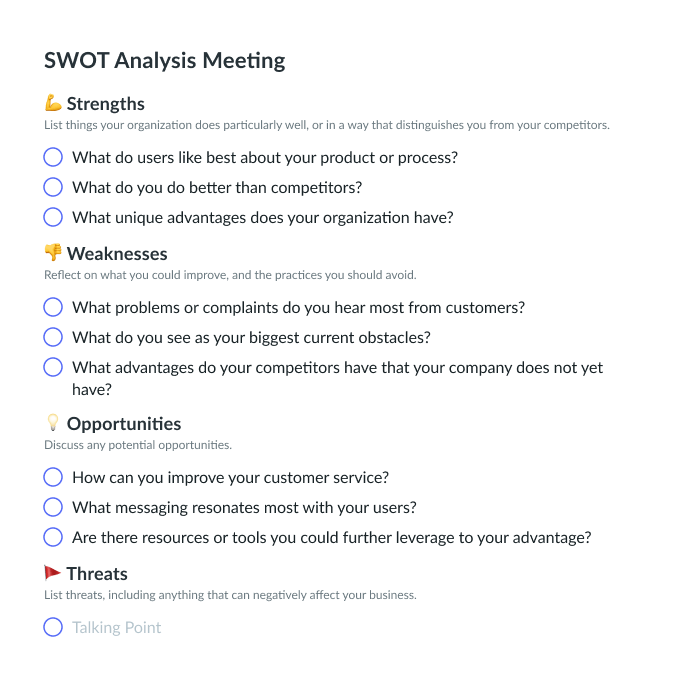

SWOT Analysis Overview
A SWOT Analysis meeting is a gathering of key stakeholders to discuss the Strengths, Weaknesses, Opportunities, and Threats of a project or initiative. The purpose of these meetings is to identify potential risks and issues early on so that they can be addressed before they become problems.
SWOT Analysis meetings should be held on a regular basis – at least once per quarter – in order to keep everyone up to date on the project’s progress and identify any new risks or opportunities. Attendees typically include project managers, team leads, and other key team members involved in the project.
These meetings are important because they allow for open communication between all parties. By identifying potential risks and issues early, the team can avoid problems down the road or easily overcome challenges because they are prepared for them.
If you’ve never gathered a team together for a SWOT analysis meeting, then this template might be exactly what you need to keep everyone on track and make them go as smoothly as possible.
How to Run an Effective SWOT Analysis meeting
There are a few key things to remember when running an effective SWOT analysis meeting.
Have a clear objective to help everyone prepare for the meeting.
Keep the meeting focused and on track by having a clear objective. Any meeting is only as effective as its purpose, and this is especially true of SWOT analysis meetings. There are a few different ways to set objectives for a SWOT meeting. One common approach is to identify specific issues that need to be addressed and then use the SWOT analysis to generate possible solutions. Another approach is to use the SWOT analysis to develop a plan of action for moving forward. Regardless of the approach taken, it is important to have a clear understanding of what you hope to achieve through the meeting. Only then can you ensure that the meeting is truly effective.
Make sure all stakeholders are involved in the discussion.
By involving all stakeholders in the discussion, you can ensure that everyone has a voice in the decision-making process and that all potential impacts are considered. This will help to create buy-in for any decisions that are made and will ultimately lead to a more successful implementation of the SWOT analysis.
Otherwise, you run the risk of making decisions that could have a negative impact on certain groups or individuals. And you run the risk of having team members who aren’t fully on board with the plan.
Take time to brainstorm and generate a variety of ideas.
It’s essential to consider all the factors that could impact your business. This is also another reason you want people from across the business in the room with you. Perhaps they’ve seen something you haven’t or have an idea that others would have never thought of! With a little brainstorming, you can ensure that your SWOT analysis is thorough and effective.
Document the results of the meeting so you can refer to them later.
By documenting the results of each meeting, you can ensure that everyone is on the same page and that all stakeholders have access to the most current data. This way, when it comes time to review your company’s strengths, weaknesses, opportunities, and threats, you’ll be able to make informed decisions based on the latest information. So next time you’re planning a SWOT meeting, be sure to take some time to document the results. It could make all the difference in the success of your business and in running more effective SWOT analysis meetings in the future. If you follow these best practices, you’ll be sure to have a successful SWOT analysis meeting that will help your business achieve its goals.
SWOT (Strengths, Weaknesses, Opportunities, Threats) Analysis Template:
SWOT analysis is a widely used framework for strategic planning in which managers examine their company’s internal strengths and weaknesses as well as external opportunities and threats.
1 💪 Strengths
This section will be used to discuss your company’s strengths. This is where you want to ask important questions and really focus on anything and everything your company does especially well.
List things your organization does particularly well, or in a way that distinguishes you from your competitors.
- What do users like best about your product or process?
- What do you do better than competitors?
- What unique advantages does your organization have?
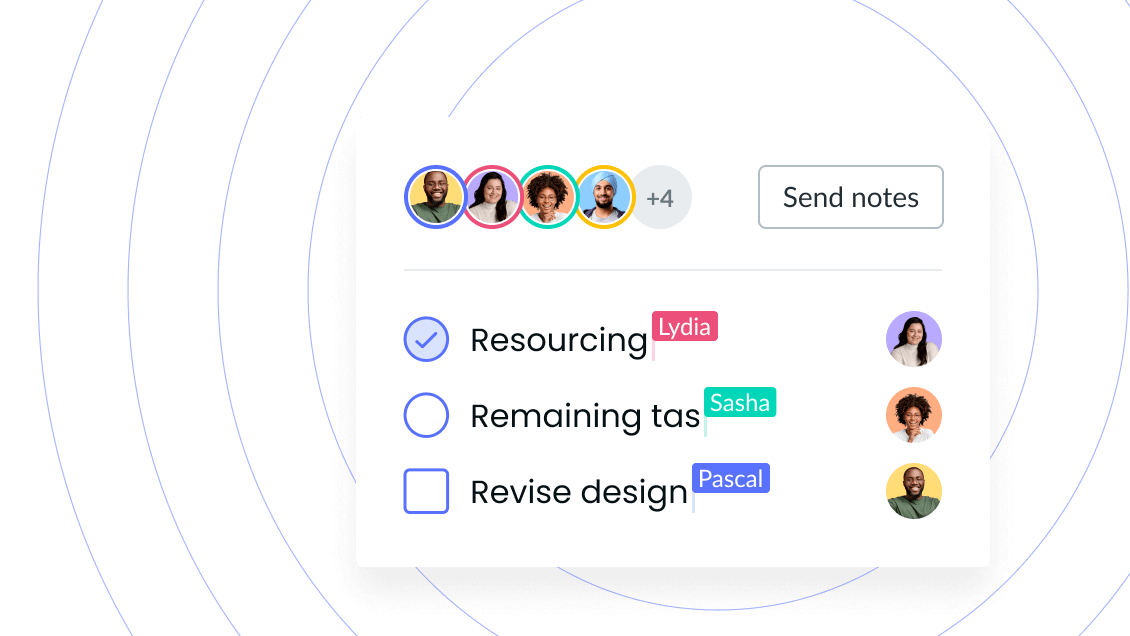
2 👎 Weaknesses
Like being honest about your strengths, you should also be brutally honest about your weaknesses. Use this section to reflect on what’s happening right now within your organization.
Be honest! Reflect on what you could improve, and the practices you should avoid.
- What problems or complaints do you hear most from customers?
- What do you see as your biggest current obstacles?
- What advantages do your competitors have that your company does not yet have?
3 💡 Opportunities
Opportunities are openings or chances for something positive to happen, but you’ll need to claim them for yourself! This is an excellent step after listing weaknesses because that list may also inspire your list of opportunities. Discuss any potential opportunities.
- How can you improve your customer service?
- What messaging resonates most with your users?
- Are there resources or tools you could further leverage to your advantage?
4🚩 Threats
Threats include anything that can negatively affect your business from the outside. Some are easily recognizable, while others are more covert. Some threats might be happening right now, while others in the near or distant future. List those threats here
- Specific or emerging competitors
- High staff turnover
- Market volatility



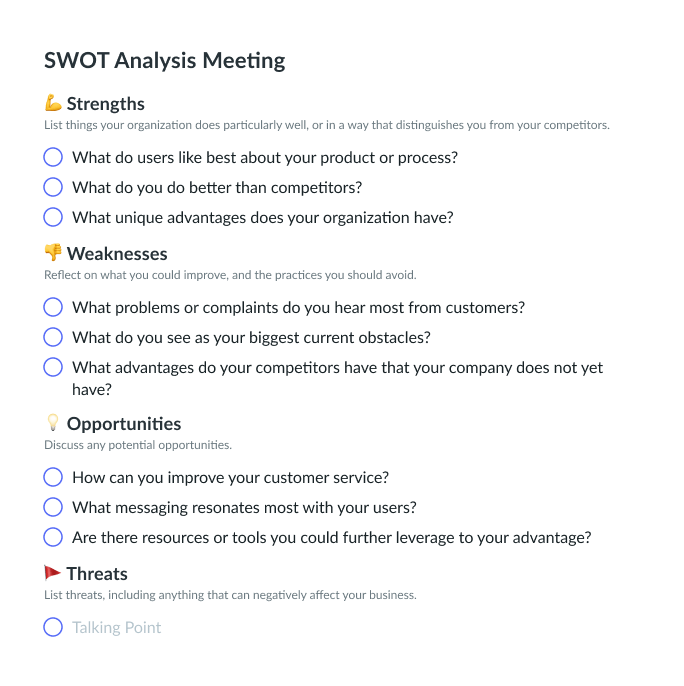





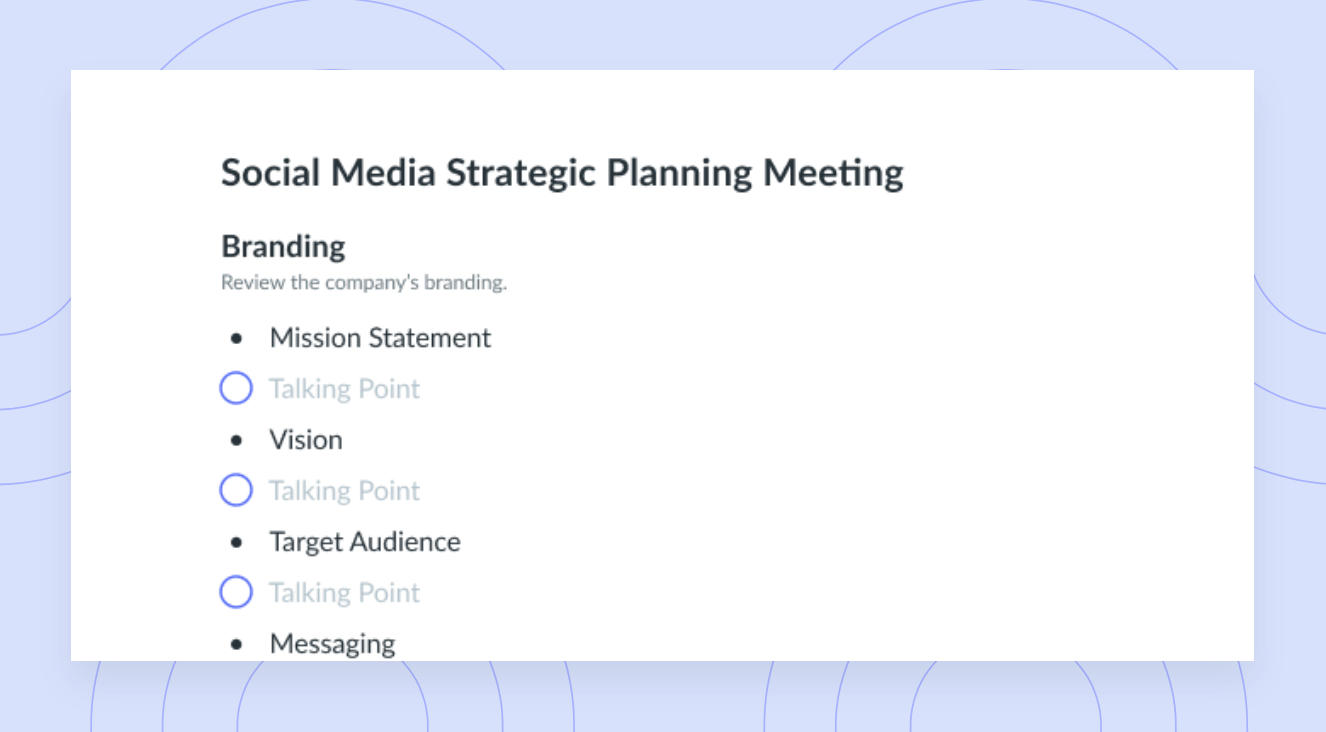
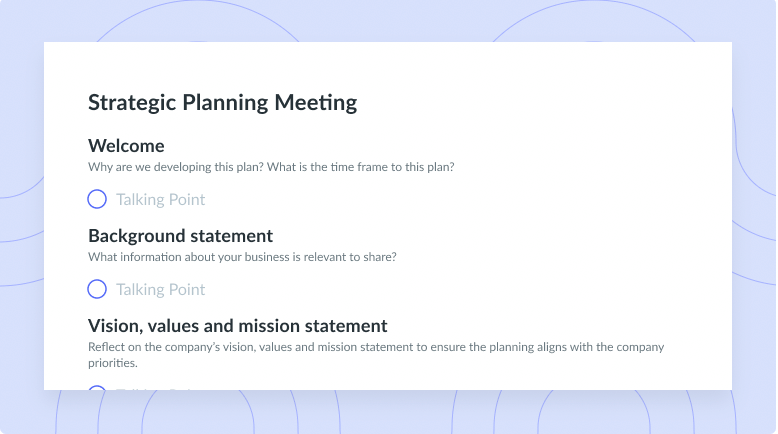
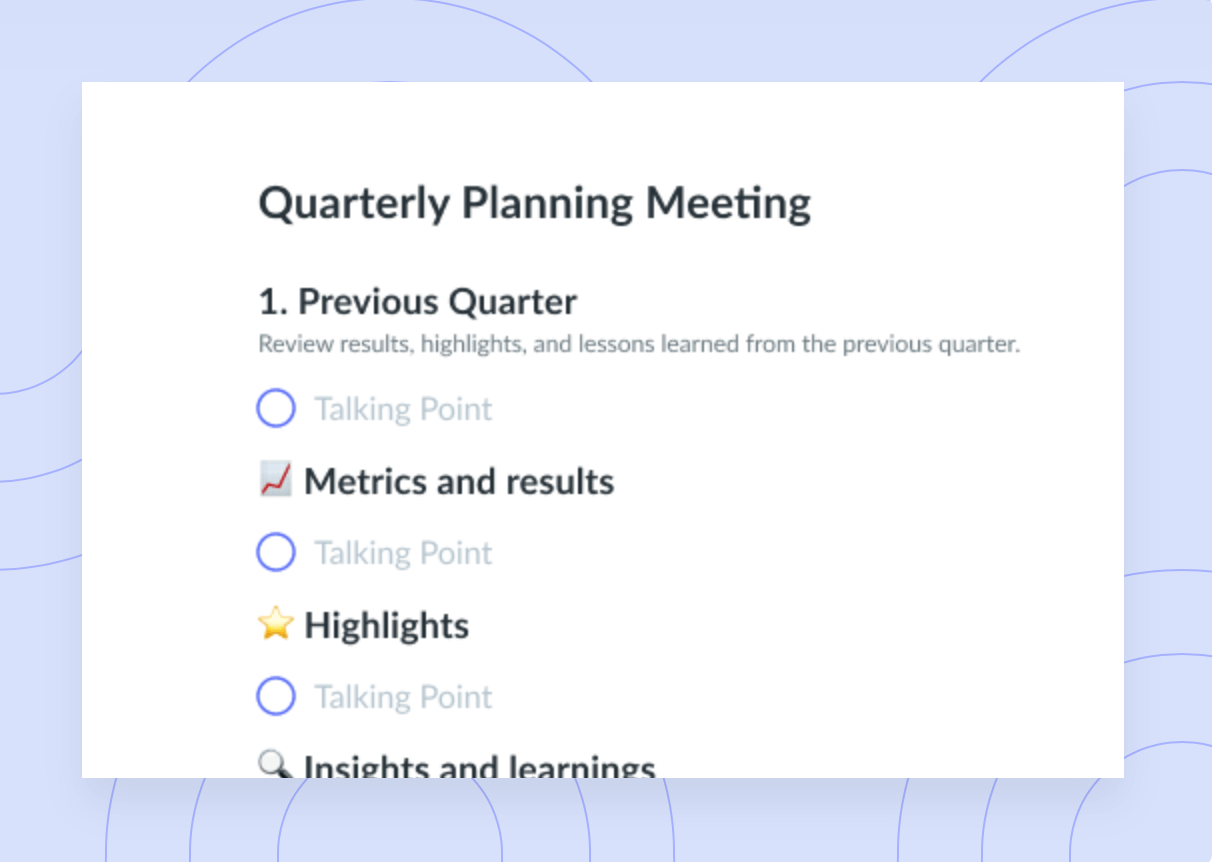
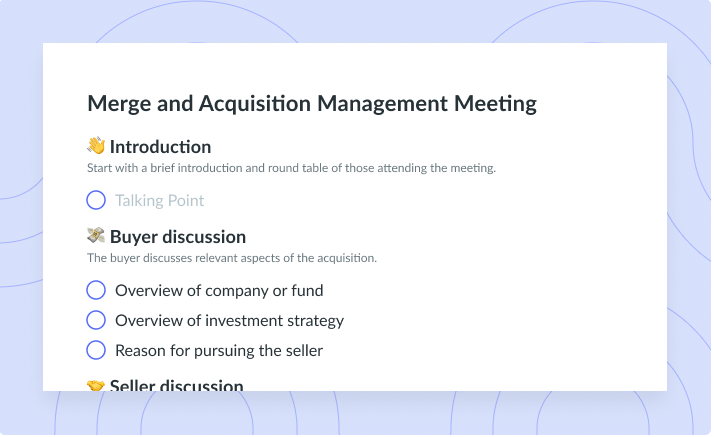
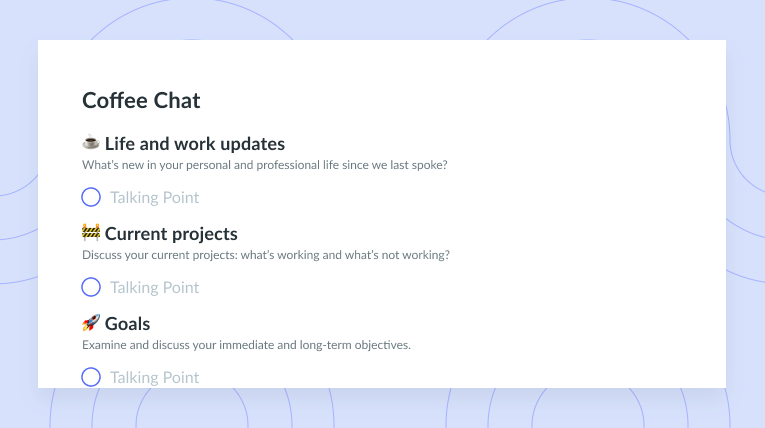
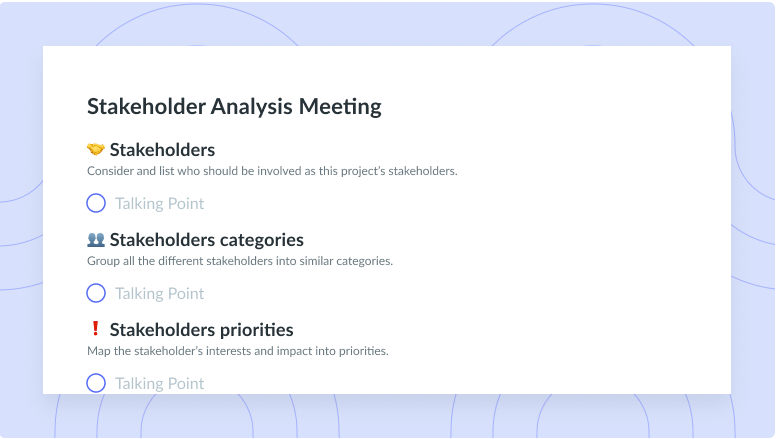
![What? So What? Now What? [Reflection Meeting] Template](https://fellow.app/wp-content/uploads/2021/08/What-So-What-Now-what-preview-v2.png)
